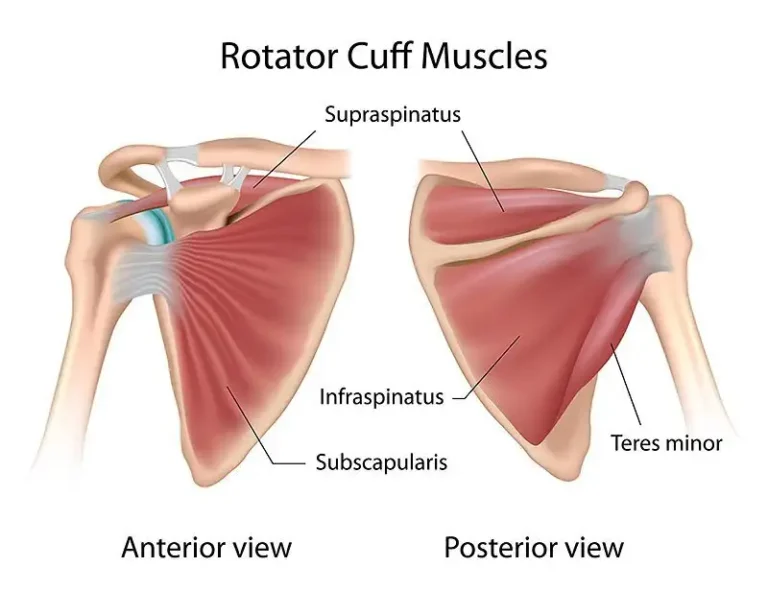
Deep persistent pain in the shoulder can affect young and old alike
The causes, however, can be very different and require a thorough diagnostic process to understand the underlying problem and lead to a solution.
Young active patients often feel that shoulder pain stems from overuse. This may be the case, but it is important to understand why. Current exercise regiments usually emphasize strengthening the deltoid muscles, but the rotator cuff is largely ignored.
This leads to an instability syndrome that can cause pain and even worse, a mechanical deficiency of the shoulder joint. If the pain is a chronic problem, with no history of a single traumatic event, the patient will usually respond to strengthening therapy. This therapy will require diligence from the patient and the therapist.
When an acute injury leads to persistent pain
An acute injury, such as a fall or an impact on a raised arm, may lead to a discrete injury that could require repair. When an acute injury leads to persistent pain, we often order an MRI, which is a diagnostic tool that examines the soft tissue deep in the shoulder. An ordinary x-ray examines bony structures, and often displays as normal in people with painful shoulder symptoms.
The MRI can often indicate the severity of the soft tissue injury and can dictate whether continued conservative treatment (anti-inflammatories, corticosteroid injections, and therapy) is required, or if surgical intervention is warranted. A torn cartilage rim or tendon rupture will usually not get better on its own; hence a mechanical solution may be necessary.
In today’s modern age of medicine, we can solve many of these problems through arthroscopic surgery. This procedure allows the joint to be visualized with a small camera inserted through tiny holes in the skin outside the joint.
This procedure minimizes scarring, improves the surgeon’s visualization of the problem, and speeds the recovery. In certain cases, an open incision may be required depending on the severity and location of the problem.
Older patients often attribute their shoulder pain to “arthritis”. In fact, arthritis in the shoulder joint (particularly the ball and cup joint) is rather rare. Arthritis is the loss of cartilage in a joint that leads to bone grinding against bone. This osteoarthritis condition is more commonly seen in the knee, hip, or even the base of the thumb, but is much less common in the shoulder.
The impingement syndrome
The most common cause of shoulder pain in older people is known as impingement syndrome. Bursitis is often an element of this syndrome, and this frequently used term is much more accurate in depicting the problem than the term “arthritis’. Impingement is the mechanical process of the overlying bony arch of the shoulder (acromion of scapula and clavicle) pressing on or rubbing on the underlying rotator cuff tendons and bursa. With age, the blood supply to the rotator cuff is diminished, and small micro-tears in the tendon leads to tendinitis, or bursitis, or even larger tears. This situation may respond to conservative treatment of a corticosteroid injection to reduce the bursitis, or therapy to improve the strength of the intact rotator cuff.
A complete tear in the rotator cuff implies that the torn tendon has pulled away from the bone; in this case, the patient will either be physically unable to raise the arm or will experience severe pain when the arm is raised. Impingement syndrome is characterized by pain when the arm is elevated, pain that is worse at night, and inability to lie on the side of the affected shoulder.
Getting to a functional shoulder with minimal or no pain
The shoulder is a demanding joint and requires patience on the part of both patient and treating surgeon. The recovery is usually not rapid, but diligent adherence to the therapy protocol will in most cases yield a good result and a functional shoulder with minimal or no pain.
The key to treating shoulder pain is to seek the appropriate specialist and undergo a thorough physical examination of the shoulder with the indicated studies ordered by that surgeon. Therapy often plays a major role in the recovery of this particular joint and arthroscopic techniques allow a faster, minimally painful recovery if surgical repair is indicated.







